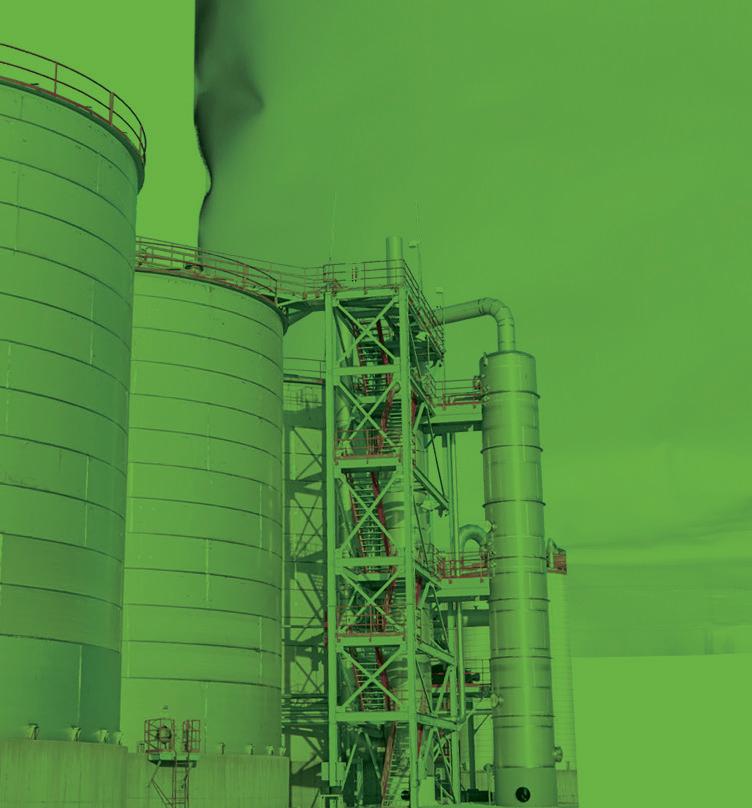
4 minute read
Phibro Ethanol Performance Group








Trust Me. I’m from the Government and Here to Help
Dave VanderGriend President, Urban Air Initiative CEO, ICM Inc. 316.796.0900
davev@icminc.com
Uh, no thanks, and on the count of three let’s all do an eye roll. Those of us in the ethanol industry know not to expect much help from the government. We put a lot of trust in our legislators and federal agencies, with little to show for it.
So who do we trust to take the shackles off and let ethanol and all biofuels compete in the world’s largest gasoline market?
In January of 2017, as President Donald Trump came to Washington, we didn’t know what we didn’t know. He was an entirely new breed of politician and, in fact, often said he was not a politician. But what we thought we did know was that he was determined to remove regulations that were holding back American business. So that held some excitement and promise as to the art of the possible.
As we looked for new markets and demand for ethanol and the agriculture products that power it, we knew we were a good fit for a new era of regulatory reform. And we laid out a clear path through various comments, early meetings with the U.S. EPA, countless articles and presentations, and even direct communication with the president. Actions that cost nothing but could have tremendous returns. It’s no secret that all of these actions, all of the roadblocks, land at the doorstep of EPA. Yet, almost four years later, none of our issues have been addressed.
Our ethanol and agriculture industries are reeling from EPA’s systematic destruction of the RFS and the failure to open access to the market. No White House can micromanage agency rulemakings, and EPA continues to chip away at ethanol, in many cases by doing nothing. Consider this list of regulatory reforms we presented in comments to EPA nearly four years ago, and have repeatedly presented in the years since. These were deregulatory, free market steps needed to increase demand, all of which have been ignored. • Allow the Reid vapor pressure waiver to apply to all ethanol blends because vapor pressure actually decreases as volume increases. (While we did get an E15 waiver, we are limited from higher blends.) • Approve an E30 certification fuel. • Approve blends up to E30 for distribution through legacy pumps and for use in legacy vehicles. • Reinstate vehicle mileage credits to encourage auto makers to build ethanol-optimized vehicles. • Correct the Motor Vehicle Emission Simulator (MOVES) model that currently penalizes ethanol by adulterating the gasoline portion of the test fuels that are currently imbedded in the Clean Air Act. • Enforce the aromatic toxic caps on gasoline. • Raise the minimum octane requirement for all gasoline. • Update ethanol’s life cycle analysis as required by law.
So, now who do you trust? Well, I trust you—the ethanol industry—to use common sense and recognize we are at the edge of the cliff. With the future of the RFS uncertain, with overall gasoline demand likely to continue to decrease, and with an EPA that has not been helpful, we need to preserve the liquid fuel market. To get the job done, we are going to have to expand our circle of trust to refiners, environmentalists, and others we may not always agree with.
The ethanol industry has a powerful voice when we speak as one. We need to use that voice, trust ourselves that we have a product that cleans the air, creates jobs and feeds the world. Which brings us back to Congress, people elected to represent us—our views, our values, and our products. We need to demand our legislative representatives reign in EPA and require them to stop penalizing ethanol. It is on us to present a comprehensive plan beyond simply maintaining the RFS and getting E15.
While some may say it is impossible to pass legislation in a dysfunctional Congress, I say we need to try. Let’s take the pen out of EPA’s hand, work with our partners in the liquid fuel market and bring Congress something it can work with—a plan that embodies the wish list of four years ago and sets our path for the next four years and many more.










